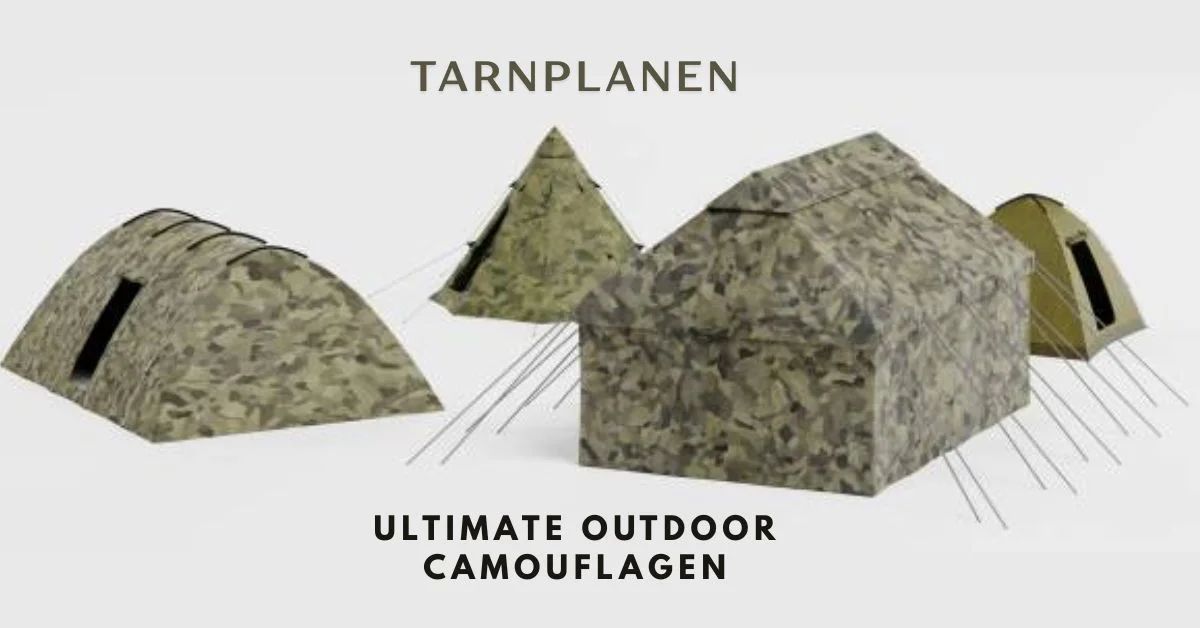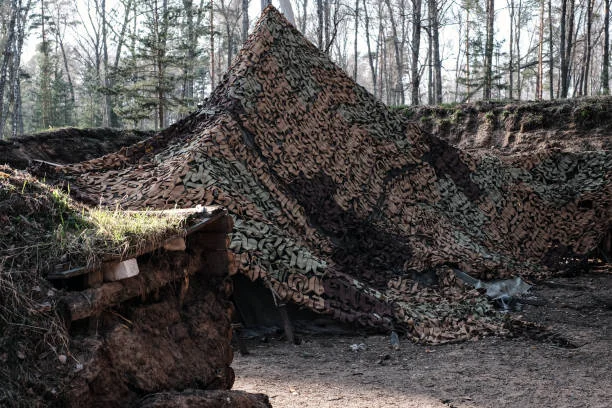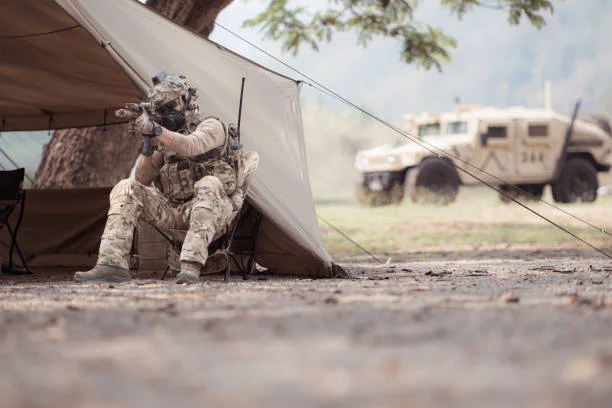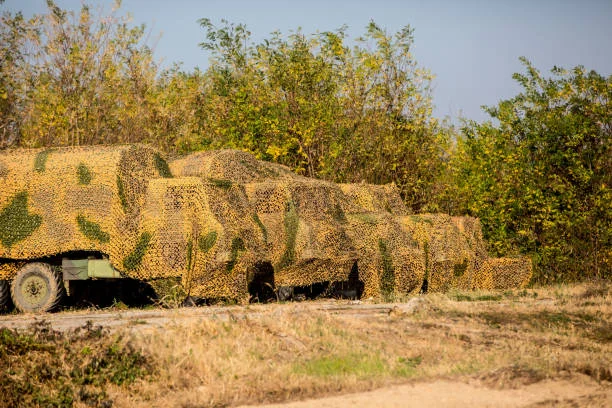In environments where visibility can compromise safety or success, tarnplanen—or camouflage tarps—emerge as indispensable tools. Originally developed for military concealment, these specialized tarps have grown far beyond the battlefield, finding essential roles in outdoor recreation, wildlife observation, industrial use, and even home decor. Blending design precision with tactical efficiency, tarnplanen offer a practical, weather-resistant solution for anyone needing stealth, protection, or a rugged, natural aesthetic.
Let’s dive into what makes tarnplanen so unique and how they can elevate both professional operations and everyday scenarios.
From the Field to the Forest: What Are Tarnplanen?
Tarnplanen are specialized tarps featuring camouflage designs that replicate natural landscapes or urban settings. Unlike standard tarps, which prioritize utility alone, tarnplanen offer both functionality and concealment. They are built to disappear into their surroundings—whether that’s dense woodland, dry desert, or urban rubble—making them ideal for military personnel, hunters, survivalists, and even homeowners seeking privacy.
These tarps are crafted not just for coverage but for stealth. Their textured patterns and specialized materials are tailored to specific terrains, making them effective in both tactical operations and peaceful nature activities like birdwatching or wildlife photography.
Types of Tarnplanen: Matching the Tarp to Your Terrain
When choosing a tarnplanen, selecting the right type can significantly impact effectiveness. Color, pattern, material, and intended use all play a part:
- Woodland Patterns: Featuring shades of green, brown, and black, these are perfectly suited for use in forests and densely vegetated environments.
- Desert Camo: Muted earth tones like beige and tan allow the tarp to blend seamlessly into sandy and rocky environments.
- Urban Camouflage: Grayscale shades replicate the look of concrete, metal, and shadow—perfect for city-based tactical deployments.
Tarnplanen can also differ in construction:
- Polyester Tarps: Lightweight, water-resistant, and budget-friendly.
- Ripstop Nylon: Known for its durability and easy portability—great for backpacking.
- Polyethylene Tarps: Heavier but highly waterproof and weather-resistant, ideal for long-term setups.
Specialized variants also include wind-permeable mesh designs for high-wind areas and heavy-duty options like vinyl tarps for maximum protection.
Key Features That Set Tarnplanen Apart
The effectiveness of a tarnplanen depends on more than just its appearance. Several design features ensure these tarps are both practical and durable:
- Reinforced Construction: Double-layer hems, rustproof metal eyelets, and reinforced corners enhance stability and longevity.
- Weather Resistance: Tarnplanen are built to withstand rain, frost, hail, and UV rays. They remain flexible even in cold temperatures and won’t rot or mildew.
- Ease of Use: Integrated loops and grommets make them quick to deploy and secure, even in urgent or unpredictable conditions.
- Custom Sizing: Many manufacturers, such as GeKaHo, offer bespoke sizes and configurations tailored to your exact needs, complete with eyelet placement preferences.
Whether you’re covering a vehicle, creating a camouflaged shelter, or shielding goods from the elements, these features make tarnplanen a highly adaptable solution.
Real-World Applications: More Than Just Camouflage
- Military & Tactical Use: Tarnplanen have long been a staple in military operations for hiding personnel, gear, and vehicles. In tactical settings, the ability to remain unseen can mean the difference between safety and exposure.
- Outdoor & Survival Gear: Campers, hikers, and survivalists use tarnplanen for shelter, ground cover, or wind protection. Their light weight and foldability make them easy to carry in backpacks, and their waterproof nature adds another layer of security.
- Hunting & Wildlife Observation: Hunters and photographers appreciate the ability to set up blinds or observation spots that don’t disturb the surrounding wildlife. Tarnplanen help maintain a low profile, increasing the likelihood of a successful session.
- Industrial & Home Use: In agriculture and construction, tarnplanen serve as protective covers for equipment, tools, and structures. Homeowners use them as privacy screens on balconies or gardens, sunshades on patios, or decorative elements for unsightly walls.
Setting Up for Success: How to Use Tarnplanen Effectively
Positioning your tarnplanen correctly can enhance both its protective function and camouflage effect:
- Choose the Right Spot: Select an area that already provides some natural cover. Use terrain features to your advantage.
- Tension is Key: Stretch the tarp taut to avoid shadows or noisy flapping in the wind.
- Anchor Securely: Use stakes, rocks, or tarp fasteners. For high winds, consider mesh variants or reinforced guylines.
- Blend with Nature: Add leaves, branches, or debris to the tarp’s surface to break up patterns and further integrate it into the environment.
For wet or uneven terrain, elevate the tarp using poles or trees to prevent pooling or moisture damage.
Maintenance Tips to Keep Your Tarnplanen Battle-Ready
To ensure long-term functionality, tarnplanen require basic care:
- Clean Regularly: Use mild soap and water with a soft cloth. Avoid abrasive tools that might wear down the camouflage print or waterproof coating.
- Dry Thoroughly: Hang to dry in the shade—direct sunlight can fade colors over time.
- Store Smart: Keep in a cool, dry place. Avoid compressing for long periods to maintain material integrity.
- Inspect Often: Check for small tears or loose grommets before each use. Timely repairs can greatly prolong the life of the tarp.
By following these simple steps, your tarnplanen will remain a reliable asset for years.
Final Thoughts: Why Tarnplanen Deserve a Place in Your Gear
Whether you’re preparing for a tactical mission, an outdoor adventure, or simply seeking a rugged, weather-resistant covering, tarnplanen provide a unique blend of utility and stealth. Their thoughtful design, material innovation, and wide-ranging applications make them far more than just another tarp—they are a crucial element of effective field gear and everyday problem-solving.
In a world where adaptability matters, tarnplanen offer the perfect balance of concealment, protection, and practicality.














